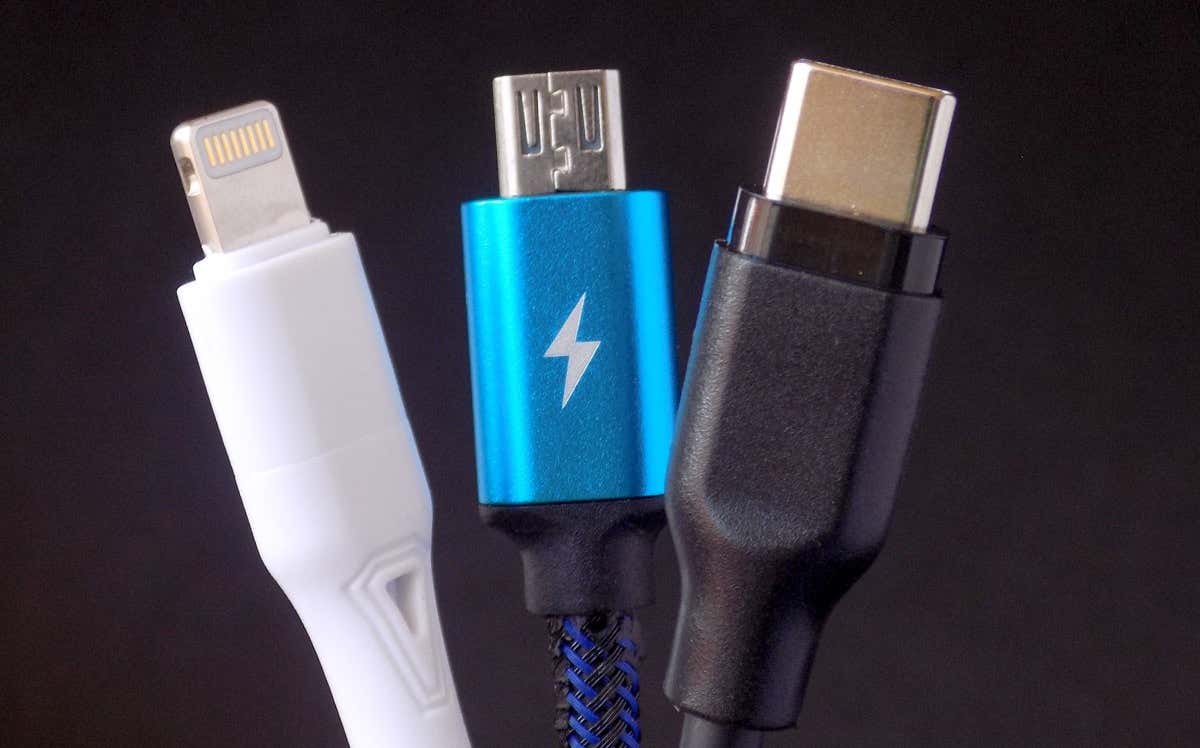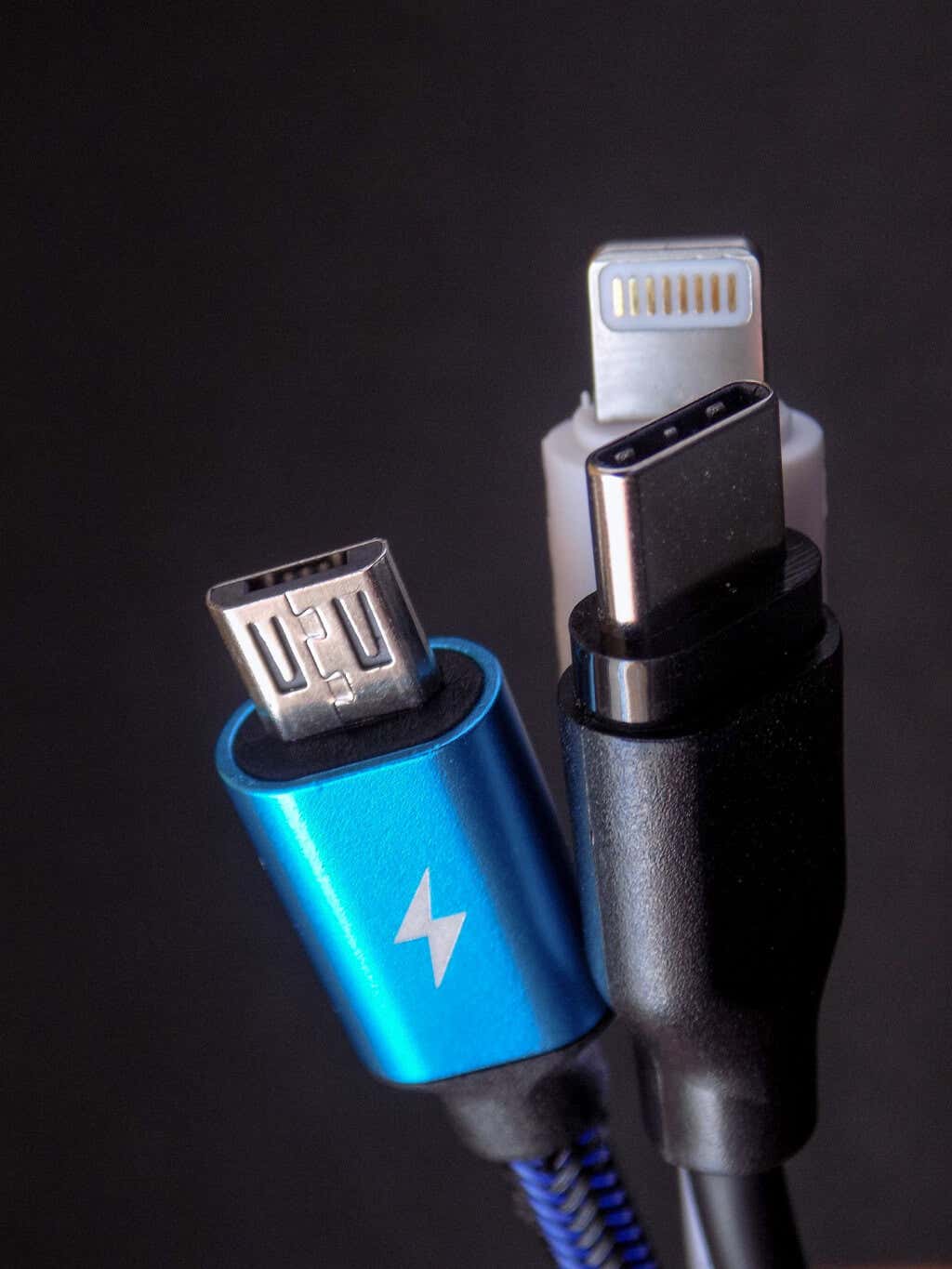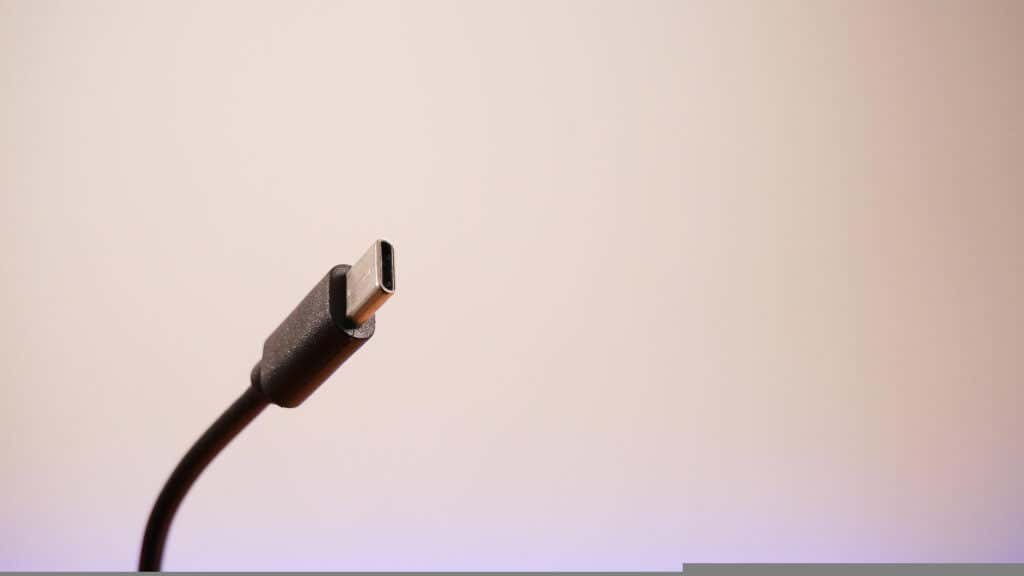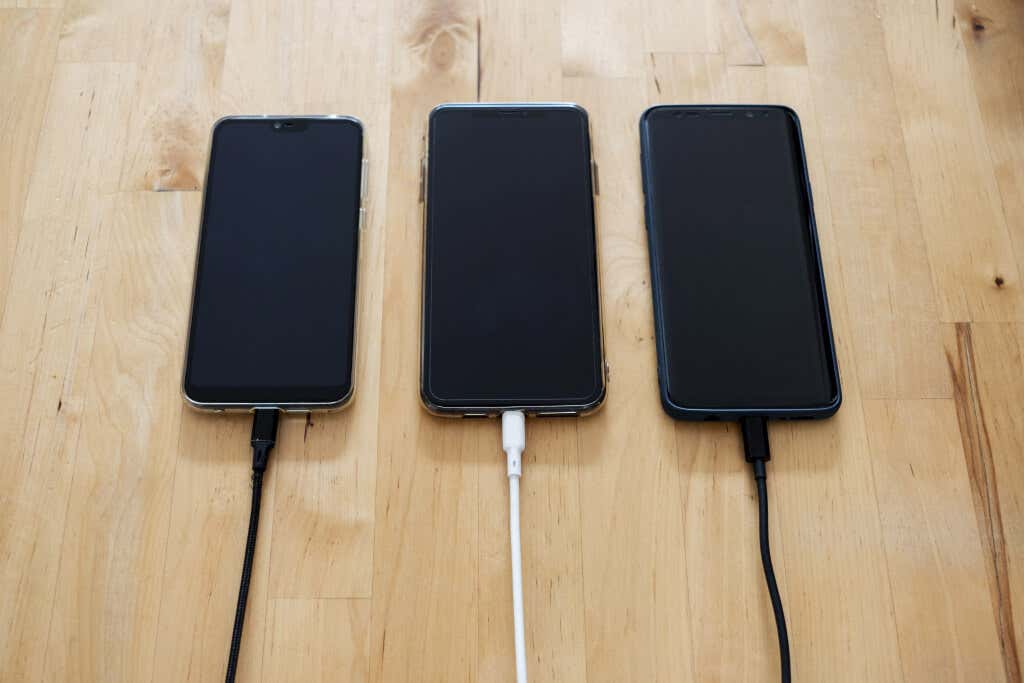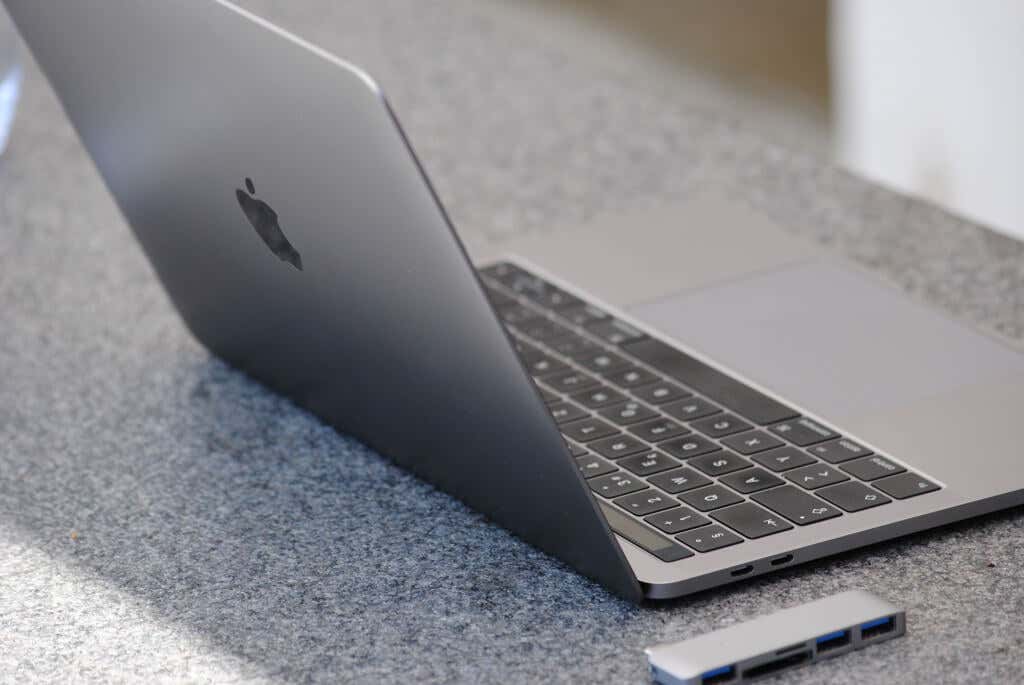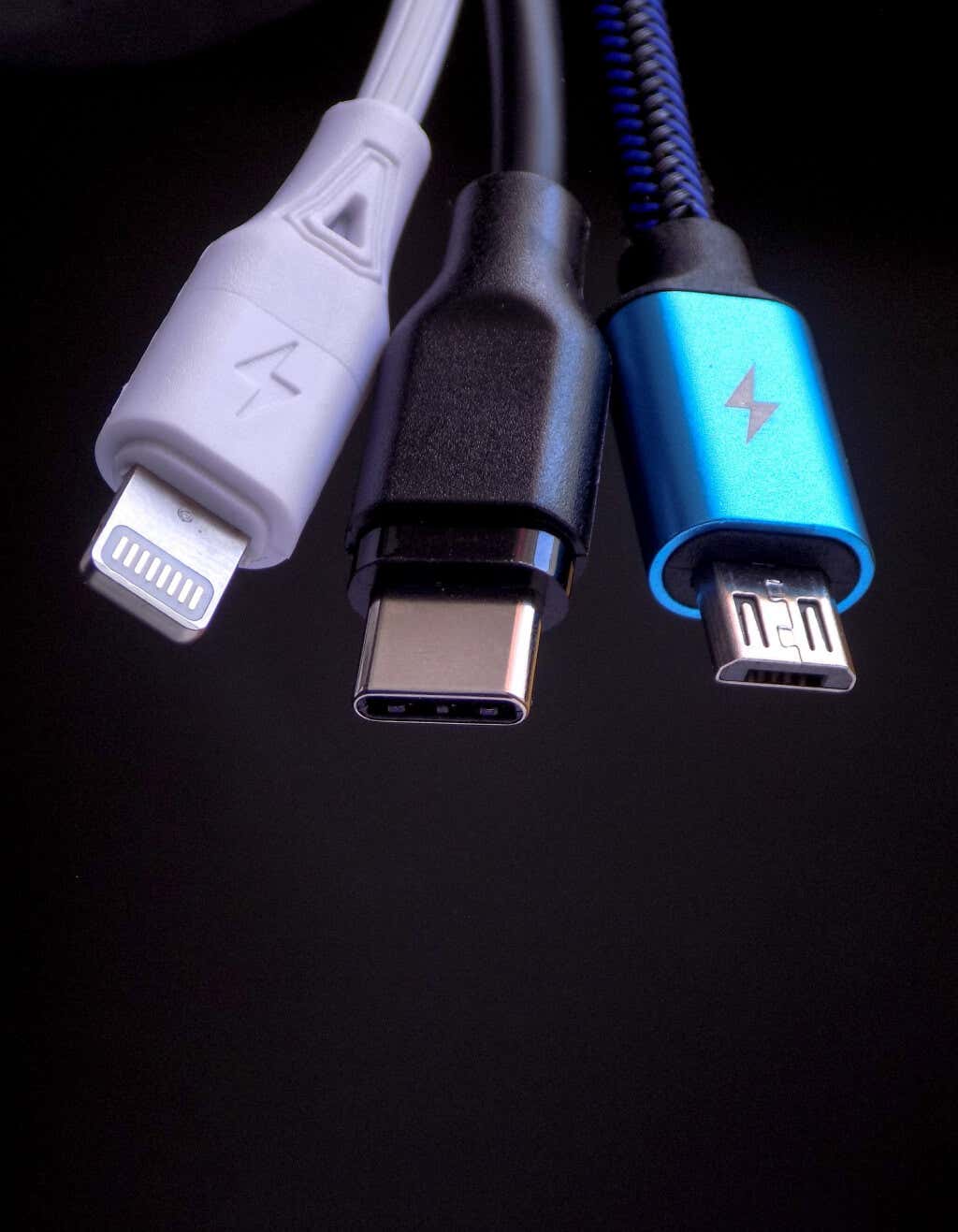Apple has a propensity for creating its own proprietary accessories, and the Lightning charging cable is an example of this. The question is – how does it fare against the more widely used USB-C connector?
To be clear, iPhones do not support USB-C. No matter how excellent you find the USB-C standard to be, you cannot switch to using a different cable. Still, here is a hypothetical comparison between Lightning and USB-C.
Lightning vs USB-C: The Rundown
Going by the specifications alone, USB-C is the clear winner. It carries more power, can transmit data much faster, and can connect with a wider range of devices. But that’s only part of the picture.
Lightning was developed by Apple to offer a slimmer alternative to the bulkier USB, and that remains true even today. Furthermore, Lightning ports themselves are a bit more durable, since the connecting tabs have been offloaded to the lightning connector.
At the end of the day, both connectors occupy very different niches. USB-C is the best charging and connectivity standard for the devices that support it, while Lightning powers the ultra-slim iPhone through significantly smaller ports.
Lightning vs USB-C: At a Glance
| Apple Lightning | USB-C |
| Launched in 2012 | Launched in 2014 |
| Proprietary standard only used in Apple devices | Supported by a wide variety of devices, from smartphones to laptops |
| Maximum transfer speed of 480Mbps equivalent to USB 2.0 | Maximum transfer speed of 40Gbps with Thunderbolt 3 and USB 4 |
| 8-pin reversible connector | 24-pin reversible connector |
| Can provide 12 W of power, optionally extendable to 20 W with a USB-C to Lightning cable and power adapter | Can provide up to 240 W of power, with the USB Power Delivery technology enabling fast charging |
| Can interface with USB, HDMI, and VGA with adapters | Can interface with USB, DVI, HDMI, VGA, and DisplayPort with adapters |
Lightning: Older, But Functional
Apple devised the Lightning standard in 2012 as an improvement over the prevalent USB-A technology, giving the iPhone 5 a leaner dock connector than its predecessors. Offering transfer speeds at the peak of USB 2.0’s limits, it was considered a much better alternative than micro USB ports found in Samsung’s phones.
Then the USB-C came out, and suddenly, there was a better standard USB option. USB devices of all sorts switched to the new technology with its reversible connectors and improved transfer capabilities.
Apple, of course, couldn’t just discard years of work so easily and kept the older port. The only change was the introduction of inductive charging in the iPhone 8, giving users an alternative to Lightning.
Even now, with USB 4 quickly becoming a reality, Apple is still shipping the iPhone 13 with Lightning ports, ignoring public criticism over their reluctance to adopt better technology. And while the EU’s new directive to reduce e-waste by ensuring universal standards will eventually force Apple to fall into line, there are still years to go before it becomes binding.
USB-C: A Confusing Step in the Right Direction
The main problem with USB-C is the confusing terminology. This new variation in the USB standard exists alongside the standard numbered versions, creating multiple versions with differing speeds and features.
The only thing implied by USB Type-C is the physical design of the connector – the actual specs depend on which version of USB or Thunderbolt it chooses to implement. For example, versions supporting Thunderbolt 3 can give transfer speeds of 40Gbps, with the more common USB 3.1 capable of 10Gbps.
Even the USB 3.0 standard offers data transfer speeds of 5 Gbps, which is a whopping upgrade from Apple Lightning’s 480 Mbps. This higher bandwidth also allows USB-C connectors to interface with DisplayPort A/V streams at 8K resolution.
The Power Factor
Let’s face it – no one uses these cables for data transfer anymore. It is much more convenient to transfer the data through a wireless network. The only remaining use of these standards is for charging.
The USB-C standard has been designed with this in mind. Connectors leveraging the USB Power Delivery technology can supply up to 100 W of power, which is enough to power even laptops and consoles, to say nothing about mobile devices. The latest version of the technology can offer 240 W, which is yet to be seen much in practice.
Lightning, on the other hand, can just manage a measly 12 W. You can use a USB-C to Lightning cable alongside a power adapter to squeeze out 20 W, but that’s all. This means iOS devices charge much slower than the latest Android phones, even with fast charging.
Why Doesn’t Apple Use USB-C?
If the USB-C standard is such a big improvement over the older Lightning, why doesn’t Apple migrate to the new technology? A less charitable view would attribute it all to greed, though we think there is more at play here.
Right Place, Wrong Time
The first thing to keep in mind is that Lightning was launched two years before USB-C. This means that the technology was already integrated into iPhones and being used before Apple got a chance to implement the newer version of USB.
As a result, making the switch to USB-C would mean ditching Lightning merely a few years after its successful launch, dealing a big blow to manufacturers already producing the chargers and cables. So Apple kept steady.
Unlimited Power, But Limited Need
Another factor is the utility. Lightning is primarily meant for charging iPhones, and it is pretty good at this job. Sure, a USB-C cable could carry more power, but iPhones don’t need that much power in the first place. So there is little to be gained by transitioning to a different standard.
In devices where the bigger wattage could be beneficial, Apple had no qualms about adding USB-C ports. Not to mention that Apple devices like the iPad Pro and MacBook Pro are also much bigger, and can easily accommodate the larger port size without issues.
Wireless Is the Future
When was the last time when you actually connected your phone to a PC to transfer a file? Wireless connections have already become the norm, relegating wired technologies to the role of charging alone.
And with the rise of wireless charging options like MagSafe, even that use case is fading. It is possible that Apple plans to simply do away with all forms of ports in the future, making the iPhone a completely wireless device.
Lightning or USB-C: Which Is the Better Standard?
In an imaginary phone that contains both ports, plugging in a USB-C cable is the smart decision. Not only can USB-C transfer data more rapidly, but it can also transmit more power, charging the phone faster as well.
Lightning is an obsolete standard that is only alive and kicking thanks to the insulated nature of Apple’s tech ecosystem, and the relatively low power needs of Apple products like the iPhone or the iPod. More powerful devices like the Macbook are already using USB-C to great effect.
For valid reasons or not, Apple’s reluctance to upgrade the iPhone’s charging ports hasn’t endeared it to anyone. Only time would tell if the company will finally blink or just step away from wired charging entirely.
